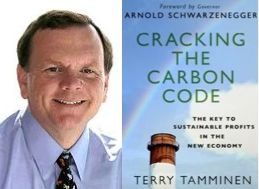We tell ourselves stories — as a year ends, a year begins
Written on January 4th, 2012We tell ourselves stories — as a year ends and the next begins
We look back. Have we been naughty or nice? What were the Ten Best…? Did I fulfill my goals? How much older do I look? How much older do I feel? What did I learn? What did I accomplish? What did I screw up?
What did I lose?
All stories, narratives: This is what happened and this is what it meant. This is what happened and this is what we learned.
Reflections. In the mirror and in the past.
We do it as individuals, we do it as a society, and we do it everywhere in between. As a company, any organization or team, a family, a relationship.
Though calendars vary, the death and birth of the year occurs at the end of the last of twelve cycles rooted in the movement of heavenly bodies, and in the days, nights, and seasons of nature.
We look forward. We set goals. We make up lists. We even write them down and talk about them. When else do we make resolutions? We develop plans and budgets. We go on diets. We join clubs.
Narratives again: This is what I predict will happen, this is what I hope will happen, this is what I fear will happen. And this is why, and what it might mean. Stories that haven’t happened yet.
We dream. We imagine the future at the start of the year more than at any other time.
Seeing and Speaking in Narrative
Written on November 12th, 2011The train is rolling by. I’m in my room at the Holiday Inn Capitol in DC and the tracks run right outside my window. The hum communicates enormous weight and power in rhythm punctuated by occasional quick squeals and now and then a whistle moan. Early this morning it half woke me several times. Tonight it sounds beautiful.

I taught a workshop on story and narrative today. One of my top three criteria for a good story is “at least one flesh and blood character”. I emphasize the importance of a protagonist and recommend giving people a human being to identify with, follow, root for, etc. — rather than an organization or an idea
That’s all true and good advice, but it is equally valuable to be able to see and communicate in narratives when the protagonist is not an individual. When it is a team or an organization; an idea, a cause or even a piece of legislation. I contend that looking for narratives and our roles in them is simply a wise way to approach life. We see and feel things and make connections we might otherwise miss.
On top of that, the ability to communicate in narratives pays off in all sorts of ways. People understand narratives and identify with them. Narratives engage. And when you speak in narratives, you’ve got a chance to frame the conversation.
Ira Glass defines the recurring sequence in all This American Life stories: “Then this happens, then this happens, then this happens, and this is what it means. Then this happens, then this happens, then this happens, and this is what it means.”
There’s a narrative to who your organization is. There’s a narrative to how you’ve evolved your mission. There’s a narrative to your biggest achievements. There’s a narrative to what you’re fighting for and what you’re fighting against. There’s a narrative to why your organization is valuable and how it plays an important role in bigger narratives. There’s a narrative to where you want to go in the next year or the next five. In every case it’s basically “Then this happens, then this happens, then this happens, and this is what it means” – or “and this is what we learned.”
Tapping into the unique power of story and narrative calls for both. You want to learn to tell stories of individual human beings with the plot and character arcs that can make such stories sing. And you also want to learn to see and speak in narratives about everything else.
UP NEXT
Written on August 19th, 2011DISRUPTIVE: CANCER VACCINE & HYDROGEL DRUG DELIVERY

Dave Mooney explains how his team’s cancer vaccine can train one’s immune system to target specific cancer cells, and describes the use of novel hydrogels in drug delivery and tissue regeneration.
Chris Gemmiti, discusses translation of these hydrogels
from bench-to-bedside.
Latest episode
of my podcast series with
Harvard’s Wyss Institute for
Biologically Inspired Engineering
——————————————————————————————————————————-
Free Forum Progressive Voices Network on TuneIn
Saturday 2/20 7pmPT/10pmET
TERRY TAMMINEN
CRACKING THE CARBON CODE:
Sustainable Profits in a New Economy
SAT 2/27
(1) CORNEL WEST, Living Out Loud
(2) LOUIS SCHWARTZBERG
Wings of Life-endangered pollinators
Featured Podcasts:
Steven Hill, Europe’s Promise
Van Jones, Rebuild the Dream
George Packer, The Unwinding
Terrence McNally, A World That Just Might Work and The Power of Story

